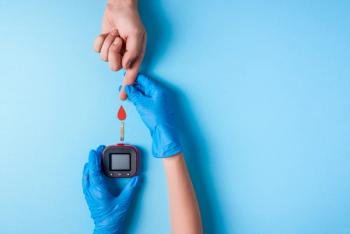
- Drug Topics November 2021
- Volume 165
- Issue 11
Making Life Easier for Families of Children With Type 1 Diabetes
Learn more about controlling pediatric type 1 diabetes through pharmacist recommendations and families who address common misconceptions.
When we found out my daughter had type 1 diabetes, I felt as though my world had turned upside down. When you have a crying newborn, a teething baby, or a child with an ear infection, you know you will have a few rough days and sleepless nights. However, a diagnosis of type 1 diabetes means many years of sleepless nights and worrisome days.
You would think that as a pharmacist I would be well equipped to take care of my child with this condition. In some ways I felt confident, and in others, clueless. For example, take insulin. In type 1 diabetes, the immune system attacks the pancreas. The body now needs injected insulin to live. Not enough insulin can kill a person, but too much insulin can also kill a person. What other medications have dosing that is not clearly outlined and can change multiple times a day? As a medical professional, this is the most challenging part of the situation.
Now imagine you have no medical background and your child receives this diagnosis. You spend several days at the hospital and then are left to your own devices to take care of someone who depends on you to regulate their pancreas and ensure their blood glucose level doesn’t go too high or too low.
And your child, whose normal and carefree life is stripped away in 1 terrifying hospital stay, now has a life of counting carbohydrates, injections, and finger sticks. (Thanks to technology, the sticks soon change to pumps and continuous glucose monitors for many patients, making life just a little easier.)
I joined as many Facebook groups as I could find for parents of children with type 1 diabetes. One common thread that stuck out was that sometimes these parents have trouble at the pharmacy. As a pharmacist, writer, and parent of a child with type 1 diabetes, I thought I might try to bridge the gap and o.er some tips on how pharmacists can help.
Here are some common issues, and suggestions on how to address them:
Why do patients need a blood glucose meter if they have a continuous glucose meter (CGM)?
You would think that when a child uses a CGM, they would have no need for a blood glucose meter. One parent mentioned that their pharmacist didn’t know a blood glucose meter was necessary because their child had a Dexcom CGM. However, a blood glucose meter is needed for a couple of reasons: to calibrate the Dexcom while the sensor is warming up (2 hours every time it is changed, which is every 10 days, or sometimes less, as it can fall off before then) or in case of a Dexcom signal loss or failure.
Our pediatric endocrinologist also suggests that when treating a low blood sugar level, we should finger stick our daughter because the number “catches up” faster than the Dexcom. This method also helps prevent overcorrecting the low number, ending up with a high number, and therefore requiring more insulin (see the cycle?).
How can we help patients afford their insulin?
It has been all over the news for years: Insulin costs a fortune and is unaffordable for many people. Patients often resort to skipping doses or using lower doses to conserve insulin. For those with a high co-pay, high deductible, or other affordability issues, pharmacists can help by familiarizing themselves with manufacturer assistance programs. For example: Patients who use Humalog can call 1-833-808-1234 for manufacturer assistance with pricing.
Patients who use Novolog can visit the manufacturer’s website and choose a coupon that works with their insurance. They can pay $25 per 30-day supply or select the My$99Insulin program to pay $99 for a 1-month supply of up to 3 vials or 2 packs of pens.
Why do patients need multiple types of the same insulin?
When my daughter received her diagnosis, we used Humalog at the hospital. Our insurance only paid for Novolog, so we went home with the Novolog cartridge pen. The pen had the ability to dose in half units, so we filled the prescription for cartridge vials. However, changing the vials would sometimes interfere with the pen’s spring mechanism, so a few months in we switched to the traditional NovoLog FlexPen and would round up or down rather than using half units.
Then we decided to use the InPen, a “smart pen,” and go back to using the cartridge vials with it. But before we could even start the InPen, my daughter finally decided she was ready to try the pump, so we needed the Novolog vials. Although it’s always best practice to check, a simple conversation with the parent (who becomes very knowledgeable very quickly) may save you the time and effort of trying to reach a prescriber, and get them on their way quicker with the insulin they need.
Sometimes, just a simple phone call or words of encouragement can help. Asking parents whether they need assistance with the injection technique or whether they have any questions may open up a conversation and provide an opportunity for you to help.
Remember, when parents are faced with a diagnosis of type 1 diabetes in their child, they are completely shocked and overwhelmed in most cases. Pharmacists can take steps to help parents in these difficult situations. After a few months, parents will be well equipped to deal with the ins and outs of type 1 diabetes, but they would fare even better with a pharmacist as part of their support team.
Pharmacists who are parents of children with type 1 diabetes offer advice.
Jaime Plunkett, PharmD, advises pharmacists to ensure that every patient with type 1 diabetes filling a prescription for insulin also has a prescription for glucagon and knows how to use it. “Every patient [with type 1 diabetes] prays they never have to use glucagon,but being successful with type 1 is all about being prepared for anything,” she says. “Low blood sugar is unfortunately a near-daily occurrence for someone living with type 1.
Not all lows are dangerous, but it’s daunting how quickly a blood sugar [level] of 100 can dip to a scary low, especially when you combine insulin and activity. A typical day at the playground can easily result in dangerous lows without proper monitoring and intervention,” she adds. Remind parents to always have candy, glucose tablets, and glucagon available for worst-case scenarios. Plunkett recommends that parents talk to the pediatric endocrinologist about a glucagon product that is easy to use, and that family, caregivers, and friends receive training on how and when to use glucagon.
Jaime Plunkett, PharmD, of Conemaugh Nason Medical Center in Roaring Spring, Pennsylvania, pictured with her daughter Gracie (wearing a Dexcom G6 CGM) Remind the family that type 1 diabetes was not caused by diet and that they did nothing wrong. The general public does not understand the difference between type 1 and type 2 diabetes, says Chris Schiller, PharmD, parent of a child with type 1 diabetes. “Reinforce that they didn’t feed their kid too many sweets and [should] ignore comments from others,” he recommends.
Articles in this issue
about 4 years ago
New Advances in Breast Cancer Therapyabout 4 years ago
Sleep Deprivation Can Mimic ADHDabout 4 years ago
Launch Your Own Diabetes Prevention Programabout 4 years ago
Patient Education is Key as Biosimilar Approvals Increaseabout 4 years ago
Research Suggests Ways to Decrease Food Allergy Prevalence in Kidsabout 4 years ago
The Cost of Antibiotic Resistanceabout 4 years ago
Biologics for Children With AsthmaNewsletter
Pharmacy practice is always changing. Stay ahead of the curve with the Drug Topics newsletter and get the latest drug information, industry trends, and patient care tips.




























































































































